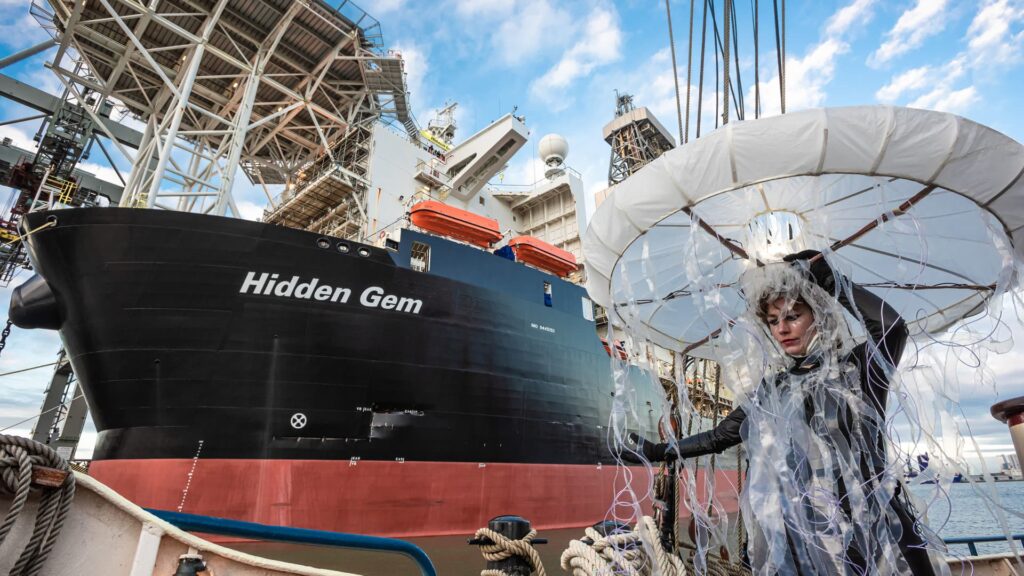ROTTERDAM, SOUTH HOLLAND, NETHERLANDS – 2022/02/08: The deep-sea creatures on board the Luciana and the mining vessel Hidden Gem seen in the background, during the demonstration.
Ocean Rebellions protest The Deep Sea Says No Why the deep sea? The deep seabed is largely unexplored, many areas have unique marine life (an estimated 10-million life forms and most are undiscovered) and many areas are important to the survival of all ocean life. Deep Sea Mining in areas like the Clarion Clipperton Fracture Zone (CCFZ) (Pacific Ocean) will destroy the deep seabed and the life that depends on it, destroying corals and sponges that have taken thousands of years to grow. (Photo by Charles M. Vella/SOPA Images/LightRocket via Getty Images)
Sopa Images | Lightrocket | Getty Images
Norway says its controversial decision to approve deep-sea mining is a necessary step into the unknown that could help to break China and Russia’s rare earths dominance.
In a vote earlier this month that attracted cross-party support, Norway’s parliament voted 80-20 to approve a government proposal to open a vast ocean area for commercial-scale deep-sea mining.
It makes the northern European country the first in the world to move forward with the process of extracting minerals from the seabed.
Norway’s government said the practice could be one way to help facilitate the global transition away from fossil fuels, adding that every country should be exploring ways to sustainably collect metals and minerals at their disposal.
Scientists, however, have warned that the full environmental impacts of deep-sea mining are hard to predict, while environmental campaign groups have slammed the approval of what they call an “extremely destructive” process that sends a “terrible signal” to the rest of the world.
The goal of any exploration activities should be to better understand the scale of the environmental threats deep-sea mining poses — not to justify a practice we know will have vast negative impacts on marine…
Read the full article here





